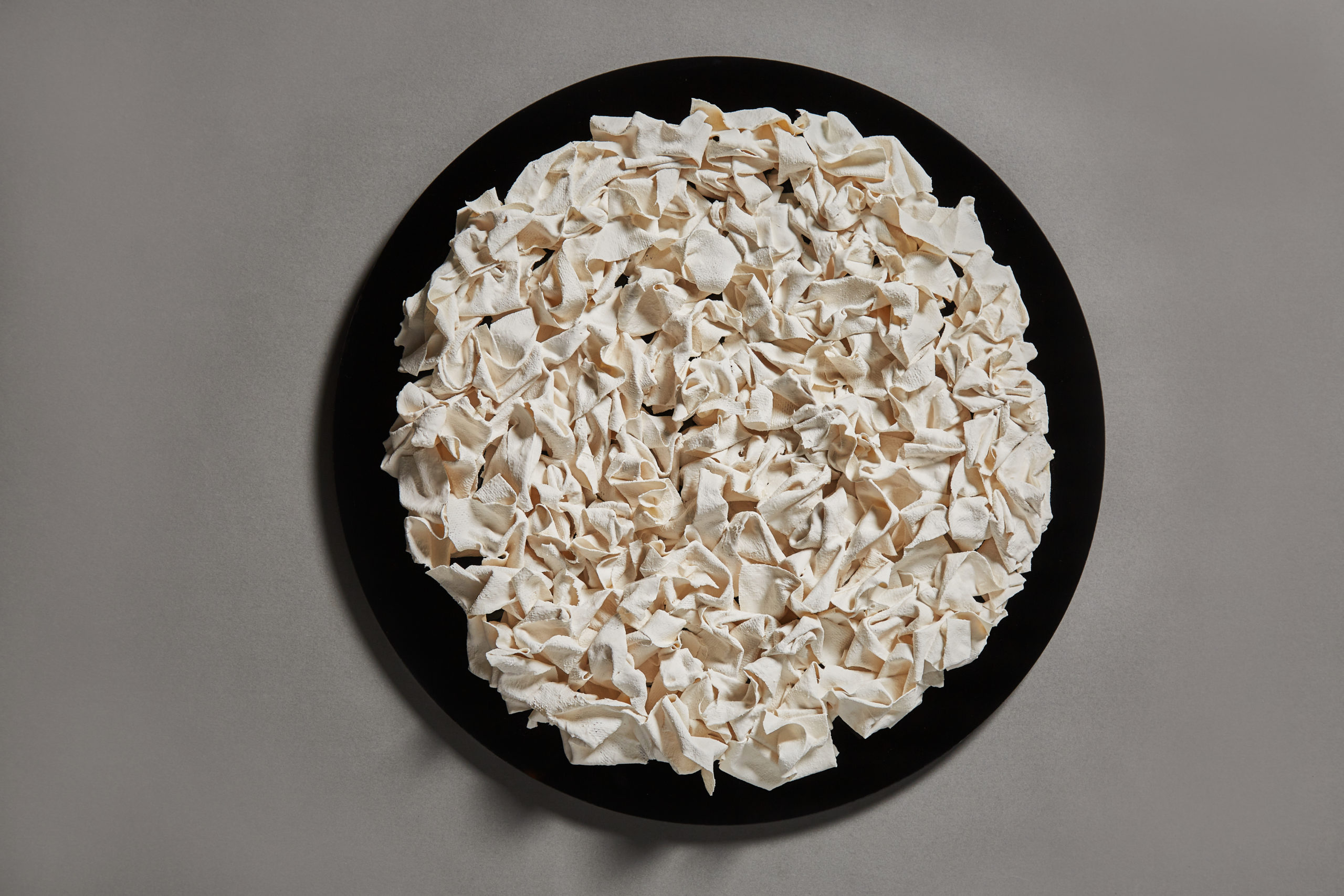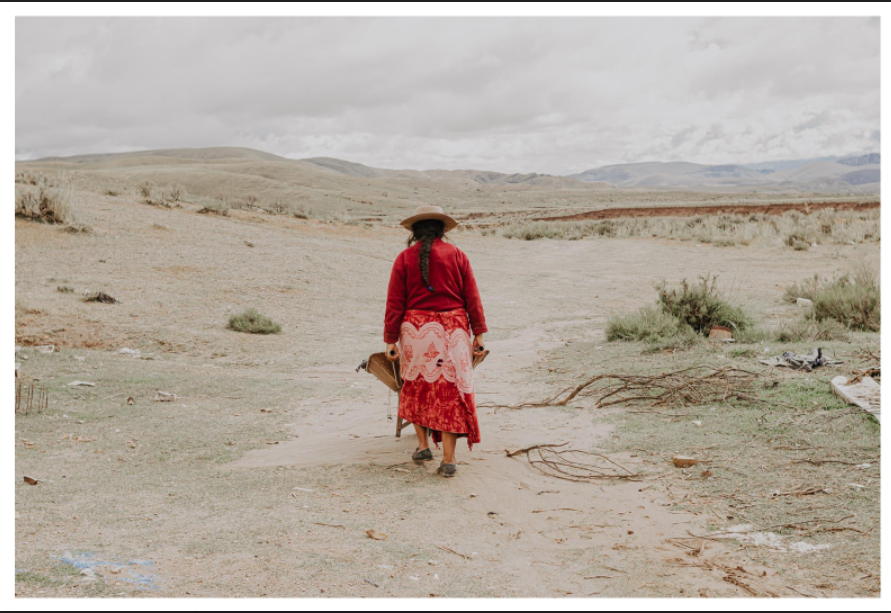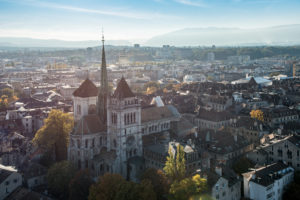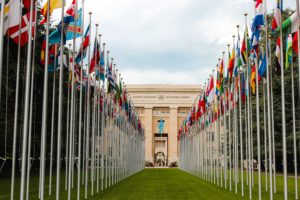Lectures: Breakout sessions
 Jane Perryman, “From Light to Dark from Dark to Light”. |
Breakout sessionsThe Breakout sessions have become a popular feature of past congresses that provide an opportunity for members to share their special interests not necessarily related to the congress theme. This year, 22 IAC members were selected to share critical research, new technologies, recent work, new initiatives, current publications, curatorial events, or other topics such as community action, social initiatives, and/or reflections on past years of pandemic isolation. |
|
| * Please note that the information on this page is subject to modifications and updates. | |
Jana Bednarkova Kenney(USA/France) Lecture Title: “Winning Strategies – How to Create Successful International Ceramics Events” Now more than ever it is necessary to promote ceramic work better, specifically through the creation of new opportunities to exhibit and share this art with the public. In her presentation, Jana Kenney uses her experience from the first Contemporary Ceramics Art Fair in Paris and focuses on the idea and the process of creating new venues “from scratch”, for individual artists as well as well-known institutions. |
Andrew Burton(UK) Lecture Title: “Recent work at the European Ceramics Work Centre” During a residency at the European Ceramics Work Centre in the Netherlands in summer 2021, Andrew Burton drew inspiration from his experience and the landscape abroad, as well as from the geomorphic forces that shape a more familiar landscape – Northern England In his work, he seeks to find resonances between clay and the earthscapes that we inhabit. |
Ray Chen(USA) Lecture Title: “Hybrid Technology – Trends and Immersive Virtual Reality” Technology is morphing our world with its influences permeating through daily artistic practices, digitalised for convenience and accessibility. Virtual exhibitions were used minimally by galleries and museums. Now, a new collective experience that was cultivated during the pandemic is emerging through online exhibition platforms. The IAC 50th North American Artist Members Exhibition, “The Age of Influence”, is the latest visual and technological online exhibition, a project combining contemporary hybrid technology with virtual display to enrich the aesthetic experience into reality. |
Viviane Diehl(Brazil) Lecture Title: “Art and Life: Ceramic Art, Aesthetic Experience, Knowledge and Environmental Challenges” In the ceramic art context, the aesthetic experience, form and content are inseparable with the ability to affect and transform those involved. This presentation features artistic narratives in ceramics that reverberate from the inventive creative process, the concepts involved, the technologies and materialities to trigger the aesthetic experience, producing senses and meanings that emerge from contemporary art in southern Brazil for knowledge production. Art and life are discussed through contemporary ceramic art language in the series “Forests”. |
Isabel Fernández del Moral(Spain) Lecture Title: “Transgressions. Contemporary Ceramics. New collection of the Design Museum of Barcelona” In summer 2022 the Design Museum of Barcelona will exhibit their new collection of Contemporary Ceramics. It complements the existing works, with more than one thousand pieces and 230 artists represented. The exhibition will focus on a creative moment of contrasts, critique and reflection on current issues, where material, technical and conceptual transgressions become evident. In every case, the creation is geared towards the control of the material and transmission of a strong conceptual load. |
Karin Flurer-Brünger(Germany) Lecture Title: “My Ceramics from a Charcoal Kiln” In Southwest Germany, there has been a tradition of making charcoal in a charcoal kiln for centuries. |
Patricia Glave(Switzerland) Lecture Title: “The Status of the Visual Artist and its Recognition” The crisis situation caused by Covid 19 highlighted what has long been a recurring problem for all of us: the lack of pay or wages for a significant part of the work done. This situation of increased precariousness, due to Covid-19, further highlighted the sad reality of the lack of status and the lack of social and intellectual recognition of the profession of visual artist. Visarte Vaud, an independent association of artists, architects and curators, has received financial support from Switzerland, to work on the status of the artist through a 3-pronged approach. |
Martin Harman(UK) Lecture Title: “Exploring the Potential of a Virtual Gallery” In this presentation, Martin Harman shares his experience with creating his own virtual gallery space. As we experienced Covid lock-downs, art was gradually shifted online. During this time, technological innovations created new opportunities for artists and their work to be seen. While art exhibitions have a status quo as being shown in the physical world, artists can now create their own virtual gallery space to show their art to an audience without the acceptance of another party or a physical building and the associated costs. |
Wen-Hsi Harman(UK) Lecture Title: “Drawn by Stones” Drawn by stones is a touring exhibition in Australia curated by Bridie Moran, who works with the 4A Centre for Contemporary Asian Art in Sydney. Artists working with clay were invited from Australia, Hong Kong and Taiwan to explore the concept of “nationhood” with history, stolen land, Indigenous sovereignty and national identity. With the British Library’s old map, Wen-Hsi Harman explored the purpose behind mapping other people’s land. Does mapping other people’s land mean mapping other people’s culture? By translating mapping as a human geography study of material (porcelain, enamel, gold luster), she created two porcelain artworks for the exhibition: Theory of Land and Territory. |
Agnès Husz(Japan) Lecture Title: “The Painful Forced Track that Opened the Door to New Possibilities” What was the painful forced track that opened the door to new possibilities? Through her own story, Agnès Husz wants to show how she benefited from an anxious situation. Three years ago, it was not so natural for us to feel at home in the digital space to show our work in online exhibitions. Nowadays, it is more and more common for digital media to be included in the toolbox of all branches of art. |
Rashi Jain(India) Lecture Title: “Finding the Inner Voice: Creating Living Bridges between Tradition, Spirituality and Contemporary Clay Practice” India, the land of terracotta, temples and a rapidly evolving economy: a melting pot. As an individual, Rashi Jain is part of this churning and witnessing clay traditions transform before her eyes. With a life rich in personal and shared experiences, and through her continued practice of art and teaching, she imbibes methodologies that are carried forward through generations of Indian traditional potters; striving to transform into a “Living Bridge” of the clay heritage. |
Nelson LIM(Singapore) Lecture Title: “STILL” STILL alludes to a state of balance, where the continuous interplay between order and chaos produces creativity and transformation. Continuing his artistic explorations of porcelain clay with various materials, Nelson Lim’s current series is focused on fabrics as the transient support of the coloured slip before firing. Each crease retains the imprints of the fabrics’ delicate textures. The porcelain terrain of each artwork thus becomes an expression of his process of “spontaneous order,” or the artist’s ability to create harmony from randomness through his mastery of material and process. |
 Jain Rashi, making of Manasa Ghot (2022) |
 Nelson Lim, “STILL” |
Dr Christopher McHugh(UK) Lecture Title: “Rethinking Made in Japan figurines in the Age of COVID-19 and Beyond” This presentation reflects on the discovery, in a Japanese factory storeroom, of a ceramic figurine based on The Doctor, a painting made in 1891 by Sir Luke Fildes. The ceramic figurine was commissioned for the US market and designed and mass-produced in Seto, Japan, in 1974. This lecture traces the material trajectory of this work from canvas to ceramic, discussing the design and manufacturing processes, as well as providing insights into the cultural dynamics which led to this and other figurines being produced in Japan. At a time of unprecedented global uncertainty, the ideal of a carer’s understated heroism embodied in the figurine gains new resonance and currency, inviting us to reconsider the role of the past in the present. |
Heidi McKenzie(Canada) Lecture Title: “Ceramic Bricks: Archive & Augmented Reality” The solo exhibition, Brick by Brick: Absence vs Presence, interrogates the place of “the other” over the 110-year history of one of Canada’s most prolific, now defunct, brick factories in Medicine Hat, Alberta, I-XL. The topic is equally related to new technologies, as Heidi McKenzie worked with larger-than life bricks as canvas for archival photography, and created augmented reality that animates and questions the absence of workers of colour. This exhibition also features photographic dyptichs, archival juxtaposed alongside contemporary, as well as two tons of bricks sculpted into a wave with video projection onto the surface of the wave. |
Martin McWilliam(Germany) Lecture Title: “Form against Time” In Martin McWilliam’s small personal univers, there is a space time reality locked up in those simple clay forms – the jar and the bowl as archetypal forms. What a major cultural change that must have been when humans began to store and share food in those simple forms. Shifting from trying to copy the work he liked so much to more the idea of them and all the beauty and shortcomings of clay, water and fire, Martin McWilliam now works on re-presenting, rather than imitating. His newest objects grow in geological-like layers, overlaid as if by running lava: a metaphor in time and space. |
Jane Perryman(UK) Lecture Title: “From Light to Dark From Dark to Light” The twenty four hour light dark cycle is at the core of life on our planet controlling the circadian rhythms of humans, animals and plants known a chronobiology. Over the course of a year during the pandemic lock-downs, at two week intervals, Jane Perryman gathered data to document the angle of sunrise and sunset against the horizon, the change of daylight hours between the summer and winter solstices, and the angle of solar noon. These rule based structures are embodied into an installation of ceramics, text, poetry and sound exploring the universal concept of time and the celestial drama that sustains life on earth. |
Nicole Seisler(USA) Lecture Title: “Critical & Accessible: Reimagining Ceramics Education” The time is ripe for changes in education. None of the systemic problems of higher education are new, but the pandemic increased our awareness of them and the urgency with which we must confront them. In Spring 2020, the established means by which we teach, learn and connect underwent a seismic fracture. By reimagining how education in contemporary ceramics can be constructed and delivered and designing a series of alternative and accessible opportunities for practitioners to engage with the world through clay, Nicole Seisler addresses during her presentation why and how ceramics education can be revived. |
Visnja Slavica Gabout(Croatia) Lecture Title: “Contemporary Ceramics and New Strategies” The book Contemporary Ceramics and New Strategies is an overview of contemporary Croatian ceramics and combines the results of several large group exhibitions of Croatian ceramics, performed in Croatia and abroad. Also it includes a dozen solo exhibitions of art ceramists-researchers. The book, as well as its predecessor Ceramics and Contemporary Art, problematizes contemporary ceramics as a medium and equal part of contemporary art, but also as a platform for developing new strategies in this artistic field. |
Mariel Tarela(Argentina) Lecture Title: “Stories of Casira: a Journey through Time” Casira can be reached after a long journey, crossing heterogeneous horizons. At 3,600 meters above sea level, it is close to the sky and has thin air. Fifty families inhabit the territory, they offer alcohol and coca leaves to mother earth, Pachamama, to transform the mountains into pots. Casira’s pots embody the memory; the instantaneous, the distant, and the presumptions of possible futures emerge in the delicate walls of these pots. The women potters raise their pieces by hand and burn them in kilns with dry dung from the animals they raise, care for, and eat. The sun breaks everything except the pots. The rains drag vestiges of Inca memory from one country to another, conspiring against borders. The touching and particular stories that this presentation gathers bring to light this unique potter village and its people. |
Adil Writer(India) Lecture Title: “The Great Pause” The lock-down years were difficult: artists in social isolation, some living away from their homes/studios with no access to materials and facilities, “zoom”ing around in a whirl where fatalities and co-morbidities ruled our radar. Adil Writer encourages us to look at the positive that took place during this “great pause”: the natural beauties that returned, but also the change in mindsets and explorations of different media. In his presentation, Adil Writer weaves together the stories of over 25 IAC members from South East Asian countries, showing their pandemic and post-pandemic works. These strong visuals and text form a compelling chapter of love in the time of Covid. |
 |
|
Naho Yamashita(Japan) Lecture Title: “Introduction of International Student Program at Ishoken (Tajimi City Ceramic Design and Technology Center, Japan)” Ishoken is located in Tajimi, the heart of the ceramics industry in Japan and the host city of the International Ceramics Competition Mino. In her presentation, Naho Yamashita introduces Ishoken’s new international exchange activities. The course currently welcomes 36 students from across the globe, who come to Ishoken to explore the abundance of historic and new ceramic culture in the Mino Area. These students from various backgrounds come together to become the next generation of ceramic artists through engaging with people all over the world. |
Zhao Bin(China) Lecture Title: “Shapes of Time: my Works with Ceramic 3D Printing Technique” Ceramics as an ancient material is also deeply influenced by the development of modern techniques. For example, computer design software can replace the original hand drawing, and the lines are smooth, clean and tidy. The computer three-dimensional design modeling can enable to see more intuitively the three-dimensional shape of the product. Ceramic 3D direct printing equipment has jumped into the digital era by skipping a series of complex traditional production modes such as manual forming, molding, and casting. In this presentation Zhao Bin will present his recent works created combining handmade and computer 3D printing techniques. |
Lectures
The 50th IAC Congress will feature over 10 invited speakers, 8 member lectures, and more than 20 Breakout Sessions.
(read more...)LECTURES: Keynote Lectures
Eleven invited speakers will address different aspects of the "Melting Pot" theme.
(read more...)LECTURES: IAC Member Lectures
Eight IAC members are part of the Congress conference programme.
(read more...)Programme
The Geneva 2022 Congress will address notions related to the "melting pot".
(read more...)Congress theme
The theme of the 2022 Congress is "Melting Pot. From Alchemical Crucible to Cultural Crucible."
(read more...)




